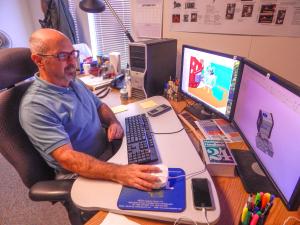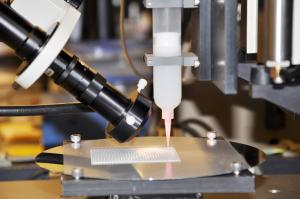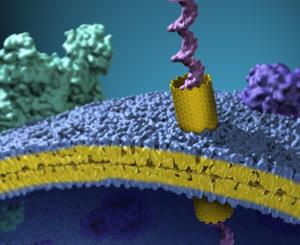LAB REPORT
Science and Technology Making Headlines
Nov. 7, 2014

Wind turbines can produce different amounts of power due to different "shapes" in the wind. Photo by Jacqueline McBride/LLNL
Going green, going clean
In an effort to bring useful, innovative clean energy technologies to market faster, the Energy Department has established what it refers to as Lab-Corps, an initiative intended to train and enable researchers from national laboratories to take the results of their work to the private sector marketplace faster.
The lab collaboration will focus on sustainable transportation, renewable energy and energy efficiency.
Lab-Corps, which builds on the National Science Foundation’s successful Innovation Corps (I-Corps™) model, is a specialized technology accelerator and training curriculum for the national laboratories that will enable lab-based teams to gain direct market feedback on their technologies and pursue the development of startup companies, industry partnerships, licensing agreements and other business opportunities.
Six national labs have been selected to participate in the Lab-Corps pilot program including Lawrence Livermore.
To read more, go to Smart Grid News.


Lawrence Livermore designer Kevin Morris was part of a research team that developed an infrared camera system to view General Atomic's DIII-D Tokamak from the inside. Photo by Julie Russell/LLNL
I spy a tokamak
General Atomics' DIII-D Tokamak has been a critical part of the nation's magnetic fusion energy research since it was built in the 1980s.
Over the years, wear and tear has taken its toll. However, it was impossible for researchers to see inside the San Diego company's highly complicated machine to assess damage -- until now.
Lawrence Livermore researchers, in collaboration with General Atomicsa nd the University of Arizona, have developed an infrared and visible camera viewing system that's able to produce wide-angle, tangential views of full poloidal (north-south direction of the magnetic field) cross-sections inside the tokamak.
The camera's images provide researchers with data about the interior conditions of the DIII-D, which was built under contract for the Department of Energy. DOE provides funding for its operation.
To read more, go to ECN.


The additive manufacturing machine creates 3-D structures.
3D transformation
Behind the glass of an SUV-sized printer, a laser fuses fine powders of steel and tungsten, layering the material and building items from the ground up. The finished products, displayed neatly on a nearby table, range from the intricate -- a safety device for nuclear weapons -- to the simple -- a basic counterweight.
The creations are born from Selective Laser Melting, a state-of-the-art 3-D printing process being perfected by researchers at Lawrence Livermore. Using a million-dollar metal 3-D printer and the right computer-modeled recipe, a trained operator can create virtually any object out of metal in a matter of hours or days.
"I honestly think this will impact everybody's lives. ... Complexity is free. It doesn't cost any more to build a complex part than it does a simple part," said Livermore lab scientist Wayne King.
To read more, go toPioneer Press/TwinCities.com


There is a whole depth of data in one simple breath.
All in one breath
The air you exhale carries a wealth of clinical information, and scientists are fashioning ever more precise methods for divining its truths.
For example, there could be several reasons for ammonia levels in breath to be elevated. It could be because of abnormal protein metabolism or a sign of possible renal disease, or there could be a problem with how the liver is converting ammonia to urea. But normal bacteria in the mouth also could lead to an excess of ammonia, as could recent intense exercise.
It can be tough to trace a line between abnormal physiology and compounds found in breath.
“There’s a very broad normal distribution of certain compounds such as acetone in the breath of healthy people, and that range overlaps with the range in those who have diabetes,” says Matthias Frank, leader of the Advanced Instrumentation and Diagnostics Group at Lawrence Livermore “So where do you draw the line for diagnostic purposes?” In many cases, there’s no clear answer yet.”
To read more, go to Proto Magazine.


An artist’s view of a carbon nanotube inserted in a plasma membrane of a cell. The nanotube forms a nanoscale tunnel in the membrane and the image shows a single long strand of DNA passing through that tunnel.
Going with the flow
Lawrence Livermore scientists has created a new kind of ion channel consisting of short carbon nanotubes, which can be inserted into synthetic bilayers and live cell membranes to form tiny pores that transport water, protons, small ions and DNA.
These carbon nanotube “porins” have significant implications for future health care and bioengineering applications. Nanotube porins eventually could be used to deliver drugs to the body, serve as a foundation of novel biosensors and DNA sequencing applications, and be used as components of synthetic cells.
Unlike taking a pill which is absorbed slowly and is delivered to the entire body, carbon nanotubes can pinpoint an exact area to treat without harming surrounding other organs.
To read more, go to Science Daily.





